
37 minute read
IN MEMORIAM
UD mourns the loss of beloved engineering alumnus, philanthropist University of Delaware alumnus and benefactor Robert W. “Bob” Gore, chairman emeritus of the board of directors of W. L. Gore & Associates, died on Sept. 17 at the age of 83.
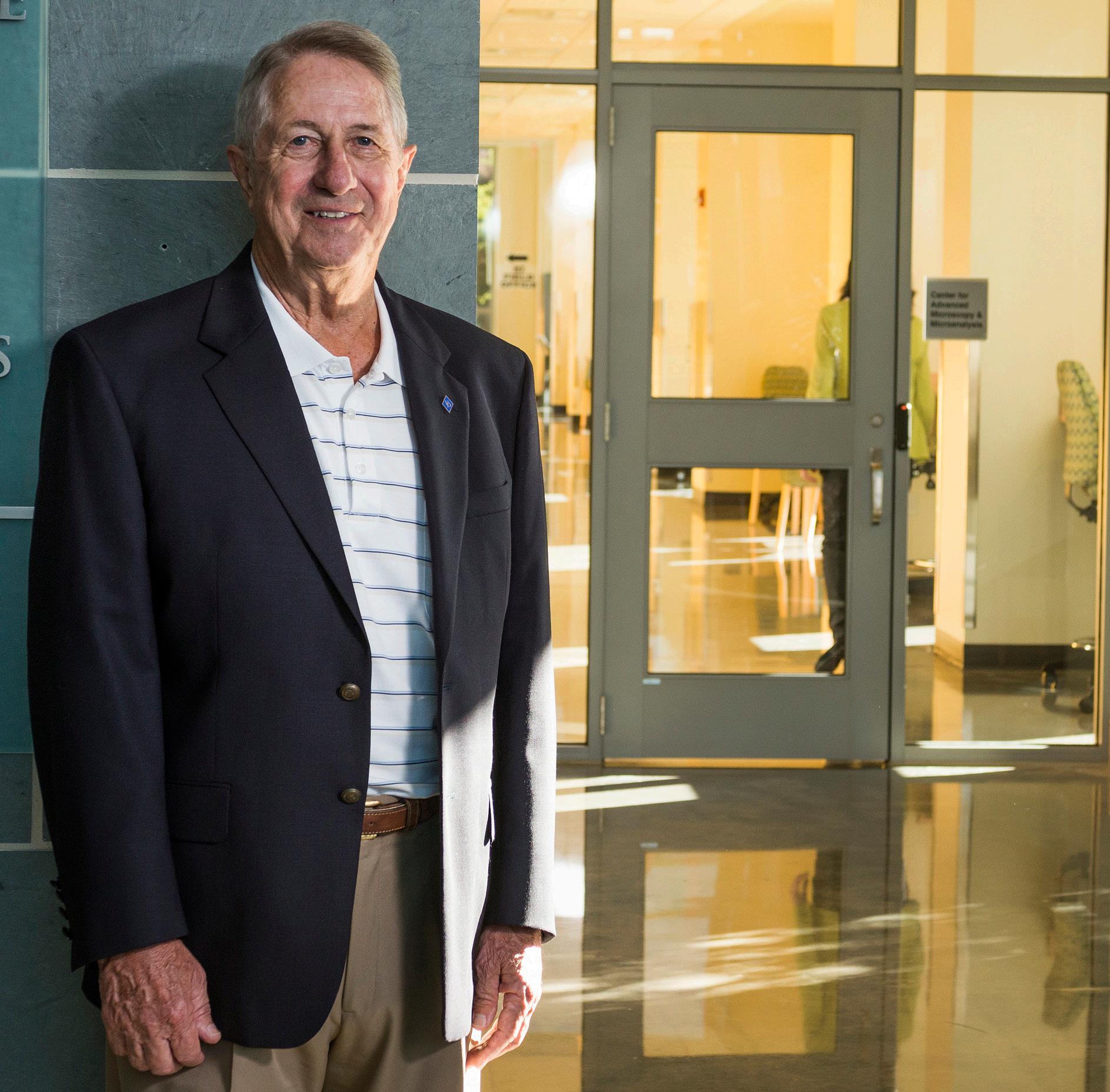
Dr. Gore was an internationally renowned inventor and member of the National Academy of Engineering and National Inventors Hall of Fame. In 1969, while working at W.L. Gore and Associates, a company founded by his parents, Dr. Gore developed expanded polytetrafluoroethylene (PTFE), which led to product applications including Gore-Tex fabric, the world’s first breathable waterproof fabric. He held nine patents, and his inventions led to materials found in spacesuits, medical devices and more.
EDUCATION AND CAREER Dr. Gore was born on April 15, 1937, in Salt Lake City, Utah. His family moved to Newark, Delaware, and he graduated from Newark High School before enrolling in the University of Delaware to study chemical engineering.
At UD, he played the trombone in the Marching Band and was a member of UD’s chapter of the American Institute of Chemical Engineers (AIChE); Alpha Tau Omega fraternity; Alpha Chi Sigma, a professional chemistry fraternity; and Tau Beta Pi, an honor society for undergraduate engineering students.
During his sophomore year at UD, Dr. Gore suggested to his father, engineer Bill Gore, an idea for an innovative multiconductor wiring strip. This provided a key solution to a manufacturing problem and earned Dr. Gore his first patent. Dr. Gore graduated from UD in 1959 with a bachelor’s degree in chemical engineering and then went on to the University of Minnesota for a doctoral degree.
He was named to the W.L. Gore & Associates board of directors in 1961, and two years later joined the family firm as an employee. His research shaped the company’s future, and he later served as president of the company (from 1976 to 2000) and chairman of its board of directors. He became chairman emeritus in 2018 after 57 years of service on the board of W.L. Gore & Associates, with 30 of those years spent as chairman.
During Dr. Gore’s time as president, W.L. Gore & Associates became a billion-dollar company. It is now a $3.2 billion company with more than 11,000 employees and offices in more than 25 countries.
The company has more than 3,400 unique inventions worldwide in a wide range of fields, including electronics, medical devices and polymer processing.
“Bob was a true pioneer that influenced the lives of so many. He was a thought leader in the industry and instrumental to the creation of a multitude of innovative products that have had a significant impact on society," said Terri Kelly, ENG83, retired president and CEO of W.L. Gore & Associates. “On a personal note, I am truly grateful for his years of mentorship and support that he provided to me throughout my career. Bob was known for his sharp mind, deep technical expertise and creative approach. He would always ask some of the most insightful questions that helped me grow as a leader. His guidance, encouragement and the opportunities he gave me, helped me achieve more than I thought possible. I am honored to have known him, and he will clearly be missed."
Dr. Gore’s impact on industry was well recognized. In 2005, he received the Perkin Medal from the Society of Chemical Industry. This is considered the highest honor given in American industrial chemistry.
IMPACT ON UD Dr. Gore’s legacy will live forever at UD. “Bob was a gifted engineer whose clever inventions touched countless lives, from astronauts protected by space suits with Gore fibers to everyday people who exercise wearing breathable Gore-Tex gear,” said Levi Thompson, Dean of the College of Engineering. “More importantly, Bob was a wonderful and generous person. It is truly an honor to count Bob among our alumni, and we are grateful for his unwavering support of UD engineering. We will continue to be inspired by his legacy of innovation and service, and we will train our students to be the kind of engineers that he was.”
Timeline of Bob Gore's UD experiences and involvement
1956: Freshman year at UD; joins UD Marching Band and AIChE
1957: Joins Alpha Tau Omega and Alpha Chi Sigma; introduces the idea for an innovative multiconductor wiring strip called the MULTI-TET™ cable, leading to his first patent
1959: Senior year at UD and graduation 1965: Makes his first gift to the University ($3)
1986: Joins the University of Delaware Research Foundation
1987: Established the W.L. Gore Entrepreneurial Scholarship
1990: Starts serving on the Chemical and Biomolecular Engineering Advisory Council - Departmental and Special Program Boards
1991: Becomes a member of the 150th Campaign Committee
A LEGACY OF GENEROSITY
In 1965, Dr. Gore made his first gift to the UD--$3 to the unrestricted University fund. That humble gift to his alma mater sparked a lifetime of generosity and philanthropy from Gore and his family, who committed more than $32 million during his lifetime to advance UD’s people and programs.
His loss is mourned by the entire University community, but his legacy and lasting philanthropy will continue to have a transformational impact on current and future Blue Hens for years to come.
SUPPORTING STUDENTS Students are at the core of a university’s mission. Gore and his family have ensured countless Blue Hens—of today and tomorrow—have resources and opportunities that wouldn’t otherwise be possible. In 1987, Gore’s mother, Genevieve Gore, established the W.L. Gore Entrepreneurial Scholarship in memory of Bob’s father and her husband, Bill Gore. She wanted to continue the Gore legacy at UD while honoring the qualities her husband exemplified, especially as an outstanding proponent of the entrepreneurial spirit in business. To date, 189 students have benefitted from the scholarship. In addition to supporting undergraduate students, Gore also greatly valued graduate education. In 2011, he donated $1 million to establish the Robert W. Gore Fellowship in the College of Engineering. The fellowship is awarded to two academically deserving Ph.D. students in the College of Engineering. Since 2012, 19 graduate students have received this support.
FUNDING FACULTY Gore recognized that direct support for students wasn’t the only way to help them succeed. Recruiting and retaining talented faculty has long been a way to attract bright students while also enabling and continuing innovation that marked Gore’s career—advancing research and elevating the University as a whole.
In 2001, Gore established the Robert W. Gore Professorships in Chemical Engineering and the Arthur B. Metzner Professorship in Chemical Engineering. Wilfred Chen and Kelvin Lee currently hold the titles of Gore Professors of Chemical Engineering while Antony Beris holds the title Arthur B. Metzner Professor of Chemical Engineering. All three named professors teach and engage students in their innovative research that will have lasting impact far beyond campus, something Gore himself experienced as he carried the lessons learned from beloved professors with him after his time at UD. In addition, Lee is the director of the National Institute for Innovation in Manufacturing Biopharmaceuticals (NIIMBL). “The support Bob provided for me and my colleagues impacts us as faculty members, our students and the broader University community,” Lee said. “We have been able to use his generosity to not only cultivate interesting and innovative research, but to leverage against federal dollars to create new initiatives, growing the prominence of the University into being a global leader in biopharmaceutical manufacturing. I hope my work continues to be a tribute to Bob’s ingenious thinking and inventive spirit.”
Gore and his wife Jane’s support to recruit talented faculty continued when they committed $3 million to establish the Bob and Jane Gore Centennial Chair of Chemical and Biomolecular Engineering in 2014, in celebration of the department’s 100 year anniversary. The named position attracted Marianthi Ierapetritou, who was the Distinguished Professor of Chemical and Biochemical Engineering at Rutgers University. She began her tenure at UD last September and gave her inaugural lecture, called “Process Systems Engineering in the Era of Big-data and Industry 4.0 Revolution,” in February 2020.
“I have been working in the area of pharmaceutical engineering for the last 10 years, mainly on the small molecules, but in the last five years I’ve been exploring more in the area of biologics production and manufacturing,” Ierapetritou said. “I was thrilled I had the opportunity to meet Bob at the inaugural
1992: Joins the UD Board of Trustees and is recognized as a member of the UDAA Wall of Fame
1994: Serves on the Colburn Campaign National Committee
1995: Commits $18.5 million to Gore Hall on The Green; elected to the National Academy of Engineering for his technical achievements
1997: Serves as co-chair for the Campaign Steering Committee until 2003
1998: Gore Hall is dedicated. 2001: Establishes the Gore Professorship of Chemical Engineering to support two professors; creates the Arthur B. Metzner Professor of Chemical Engineering
2005: Commits $1 million to supporting the Roselle Center for the Arts; receives the Perkins Medal
2006: Inducted into the U.S. National Inventors Hall of Fame; begins serving on the College of Engineering Advisory Council– College and Program Advisory Board
2010: Receives the honorary Doctor of Science degree
lecture and speak with him in person about my research, which his and Jane’s support enabled me to bring to UD. Now, I can help Blue Hens pursue hands-on learning and also have the opportunity to help women in my classes through the different stages of their science careers. I am thankful the Gores ensured I could be part of this wonderful Blue Hen family.”
With much of his support for students and faculty falling under the College of Engineering, deans and department chairs have surely felt the impact of Gore’s giving throughout the years.
Babatunde A. Ogunnaike, dean of the College of Engineering from 2013 to 2018 and William L. Friend Chaired Professor, witnessed the profound impact of Gore’s philanthropy firsthand.
“The Gores have so generously invested in the faculty and students in the College of Engineering—positively changing the trajectory of the college, its people and programs,” Ogunnaike said. “We have lost a truly irreplaceable friend and a pillar of the community at UD, in the College of Engineering and in the chemical and biomedical engineering department, but his legacy lives on in the countless lives he has touched with his generosity, and in the outsized footprints he left on the sands of time.”
CREATING SPACES The way students learn is undeniably tied to where they learn. The innovative facilities made by possible by Gore’s generosity ensure Blue Hens will always have collaborative spaces conducive to learning and succeeding. In the mid-1990s, Gore and his family began their impactful support of UD facilities. After a conversation with then-President David Roselle about the need for more general purpose classroom space on the campus, Gore agreed to contribute $15 million for such a building to fill the last empty space on the north Green. When the project cost climbed to $18.5 million, Gore was unwavering in his support; he was adamant that it should mirror the classic Georgian style of its neighboring buildings on The Green.
The result was Gore Hall, the first new building on The Green in more than 35 years, completing a design plan originally approved by the Board of Trustees in 1915. The new building, designed by noted architect Allan Greenberg, created a home to 25 high-tech classrooms and the Center for Teaching & Assessment of Learning. It also solidified the family’s legacy as part of the beauty of The Green.
When the University announced it was building its first major laboratory in 20 years – now the Harker Interdisciplinary Science and Engineering Laboratory (ISE Lab) – Gore and his wife, Jane, were among the first to step up, committing $10 million to create the research wing of the state-of-the-art facility, now named the Bob and Jane Gore Research Laboratories.
The labs house core research facilities and equipment, including an imaging and microscopy suite, a nanofabrication facility and a materials characterization lab. This section of the building also is home to three of the University’s key research centers—the UD Energy Institute, the Delaware Environmental Institute and the Catalysis Center for Energy Innovation.
In addition to investing in students, faculty and key spaces on campus, Gore also supported the 1994 renovation of Colburn Lab and the University of Delaware Research Foundation.
HONORING BY SUCCEEDING In honor of their tremendous philanthropy that changed the landscape of UD—both physically and through impact on Blue Hens—Gore and his wife Jane were named inaugural members of UD’s Founders Society in October 2018. The Society recognizes the University’s most generous donors who have committed $1 million or more during their lifetime.
But the true tribute to their generosity is in the success of those impacted throughout the years.
2011: Commits $1 million to establish the Robert W. Gore Fellowship in the College of Engineering
2013: Commits $10 million to build the University of Delaware’s ISE Lab
2014: Commits $3 million to establish the Bob and Jane Gore Centennial Chair of Chemical and Biomolecular Engineering
2017: Becomes an emeritus member of the Engineering College Advisory Council – College and Program Advisory Board until 2019 2018: Recognized, along with wife Jane, as members of the Founders Society
2019: Recognized as part of the UDAA Alumni Circle unveiling
2020: Inaugural Gore lecture held Feb. 26
IN MEMORIAM: T.W. FRASER RUSSELL
Thomas William Fraser Russell, the Allan P. Colburn Professor Emeritus of Chemical and Biomolecular Engineering at the University of Delaware, died on Nov. 29, 2019.
Dr. Russell received his bachelor’s degree and master’s degree in chemical engineering in 1956 and 1958, respectively, from the University of Alberta and then worked for the Research Council of Alberta and then Union Carbide Canada before arriving at the University of Delaware in 1961. He received his doctoral degree in chemical engineering from UD in 1964 and joined the faculty that year—the only UD chemical engineering faculty member ever to join the faculty immediately after graduating from the doctoral program. In 2009, Dr. Russell retired from teaching.
Over his 45 years as a chemical engineering faculty member, he held several administrative appointments, including UD's vice provost for research from 2000 to 2005, director of the Institute of Energy Conversion (IEC), the IEC chief engineer, chair of the chemical engineering department, acting dean of the College of Engineering and associate dean of the college.
“Fraser Russell was a giant in the field of chemical engineering who garnered significant acclaim for his work in reaction engineering, solar cell manufacturing and more,” said Levi Thompson, dean of the College of Engineering. “A true scholar and educator, he was dedicated to sharing his knowledge with students and early-career faculty, and his influence lives on in the many engineers he has inspired. On a personal note, I am grateful to have had him as one of my professors while an undergraduate student. He was among my favorites then and now.”
Dr. Russell, author of three textbooks, eight book chapters, seven patents, 90 technical papers and 11 engineering education research papers, was named a member of the National Academy of Engineering, among the highest honors for an engineer, in 1990. The American Institute of Chemical Engineers honored Dr. Russell with the Warren K. Lewis Award for Chemical Engineering Education in 2010, named him a Fellow in 1995, and awarded him the AIChE Award in Chemical Engineering Practice in 1987.
The American Society for Engineering Education (ASEE) honored Dr. Russell with the ASEE Chemical Engineering Division Lifetime Achievement Award in Chemical Engineering Pedagogical Scholarship in 2010 and the Chemical Engineering Division 3M Lectureship Award in 1984.
FOR MORE TRIBUTES FROM FRIENDS AND COLLEAGUES OF DR. RUSSELL, VISIT HTTP://WWW.UDEL.EDU/007878

IN MEMORIAM: PRASAD DHURJATI
Prasad Dhurjati, a professor of chemical and biomolecular engineering and mathematical sciences at the University of Delaware, died on June 30, 2020.
Dr. Dhurjati joined the University of Delaware faculty in 1982 after receiving his doctoral degree in chemical engineering from Purdue University. He received a bachelor’s degree in chemical engineering from the Indian Institute of Technology, Kanpur, in 1977.
Dr. Dhurjati was known for his scholarship in the biotechnology field and was honored with the NSF Presidential Young Investigator Award and College of Engineering Special Faculty Award in 1986 and was named to the American Institute of Medical and Biological Engineering (AIMBE) in 2004.
Levi Thompson, dean of the College of Engineering, said, “Prasad had a very positive influence on countless students, colleagues and others during his many years at UD. Those who had the pleasure of working with him will always remember his generosity and encouragement. We will miss him greatly.” Dr. Dhurjati took pleasure in collaborating with those in other disciplines and was often exploring how his expertise in computer modeling could advance another person’s research. In a recent, wide-ranging interview with UDaily about a spring semester class he was teaching on computer modeling techniques, Dr. Dhurjati talked about the pleasure he found working with motivated students — even in the strange new “Zoom” context demanded after the emergence of the COVID-19 pandemic.
“If you ask me ‘why are you at a university?’ I will tell you there’s nothing that makes me happier than a student with a desire to learn,” he said. “I tell them they can ask questions forever — from 5 in the morning until midnight. Send me your questions and I will help you.
“That’s my reward — to see highly motivated students wanting to make a contribution, wanting to learn. You can’t beat it. Nothing material can beat that reward. And that’s why I’m at a university.”
Always generous with his time and encouraging of others, Dr. Dhurjati served as the 47th president of the UD Faculty Senate and held many leadership roles within the organization.
DR. DHURJATI LEFT A LASTING LEGACY ON MANY FRIENDS, STUDENTS AND COLLEAGUES.
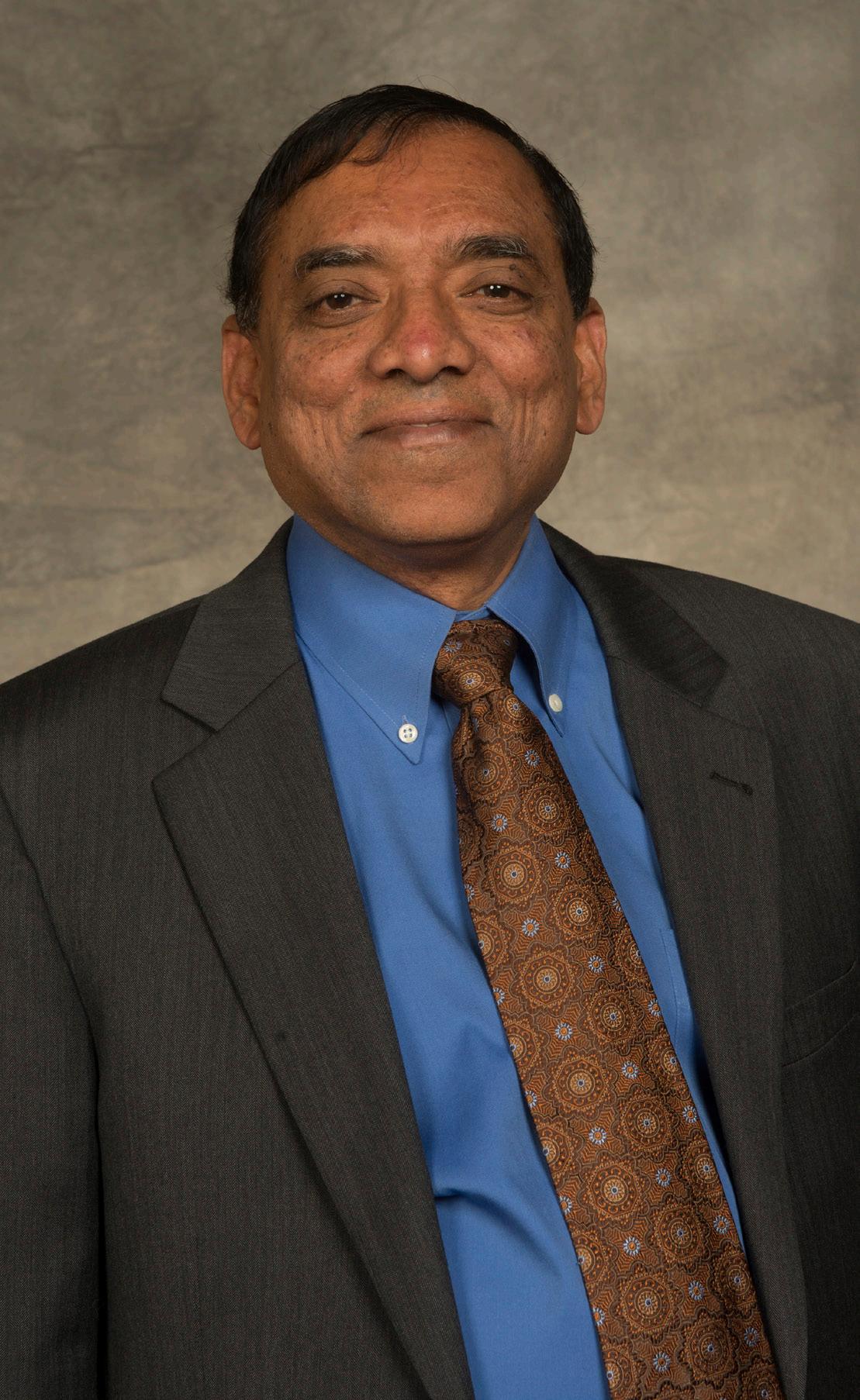
FOR MORE TRIBUTES FROM FRIENDS AND COLLEAGUES OF DR. DHURJAIT, VISIT HTTP://WWW.UDEL.EDU/007877
GOING SMALL YIELDS BIG RESULTS

Atomic-scale catalysts may pave the way for converting biomass to fuels, chemicals
University of Delaware researchers from the Catalysis Center for Energy Innovation (CCEI) and collaborators at the U.S. Department of Energy’s Brookhaven National Laboratory have developed a new class of catalysts for converting agricultural biomass, such as plant waste, into valuable fuels and chemicals.
CCEI is a multi-institutional Energy Frontier Research Center, housed at UD and funded by the Department of Energy. Catalysts are materials that accelerate chemical reactions.
The scientists have designed a catalyst composed of single platinum atoms and clusters smaller than billionths of a meter on the surface of a metal oxide called titanium dioxide. Titanium dioxide is the white pigment used in sunscreen, paints and cosmetics. The metal oxide is a stable and inexpensive material.
The researchers have reported promising results in Nature Catalysis demonstrating that, by working at the single-atom scale, scientists can selectively control the chemical reactions required to convert a plant derivative called furfuryl alcohol into a potential biofuel, known as 2-methylfuran.
This same approach has been a challenge using metal catalysts at larger scales.
The strategy could be applied to design stable, active and selective catalysts based on a wide range of metals supported on metal oxides. This would allow researchers to produce industrially useful chemicals and fuels from biomass-derived molecules.
An interdisciplinary team of researchers from University of Delaware and Brookhaven National Laboratory report new advances in converting biomass to potential biofuels. Pictured left to right are: Top row: Jiayi Fu, Jonathan Lym Middle row: Weiqing Zheng, Konstantinos Alexopoulos, Alexander V. Mironenko Bottom row: Dionisios G. Vlachos, J. Anibal Boscoboinik.
New characterization techniques developed at the Catalysis Center for Energy Innovation may help improve electrochemical storage technologies, such as fuels cells used in UD’s hydrogen fuel cell buses.

RENEWABLE ENERGY ADVANCE
UD researchers report new method for characterizing materials that might eventually help store energy
Renewable technologies are a promising solution for addressing global energy needs in a sustainable way.
However, widespread adoption of renewable energy resources from solar, wind, biomass and more have lagged, in part because they are difficult to store and transport.
As the search for materials to efficiently address these storage and transport needs continues, UD researchers from the Catalysis Center for Energy Innovation (CCEI) report new techniques for characterizing complex materials with the potential to overcome these challenges.
The researchers reported their technique in Nature Communications.
Currently technologies exist for characterizing highly ordered surfaces with specific repeating patterns, such as crystals. Describing surfaces with no repeating pattern is a harder problem.
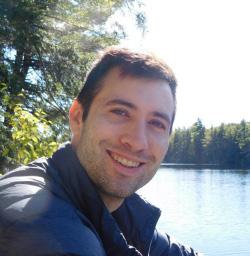
UD doctoral candidate and 2019-2020 Blue Waters Graduate Fellow Josh Lansford and Dion Vlachos, who directs both CCEI and the Delaware Energy Institute and is the Allan and Myra Ferguson Professor of Chemical and Biomolecular Engineering, have developed a method to observe the local surface structure of atomic-scale particles in detail while simultaneously keeping the entire system in view.
The approach, which leverages machine learning, data science techniques and models grounded in physics, enables the researchers to visualize the actual three-dimensional structure of a material they are interested in up close, but also in context. This means they can study specific particles on the material’s surface, but also watch how the particle’s structure evolves — over time — in the presence of other molecules and under different conditions, such as temperature and pressure.
Put to use, the research team’s technique will help engineers and scientists identify materials that can improve storage technologies, such as fuel cells and batteries, which power our lives.
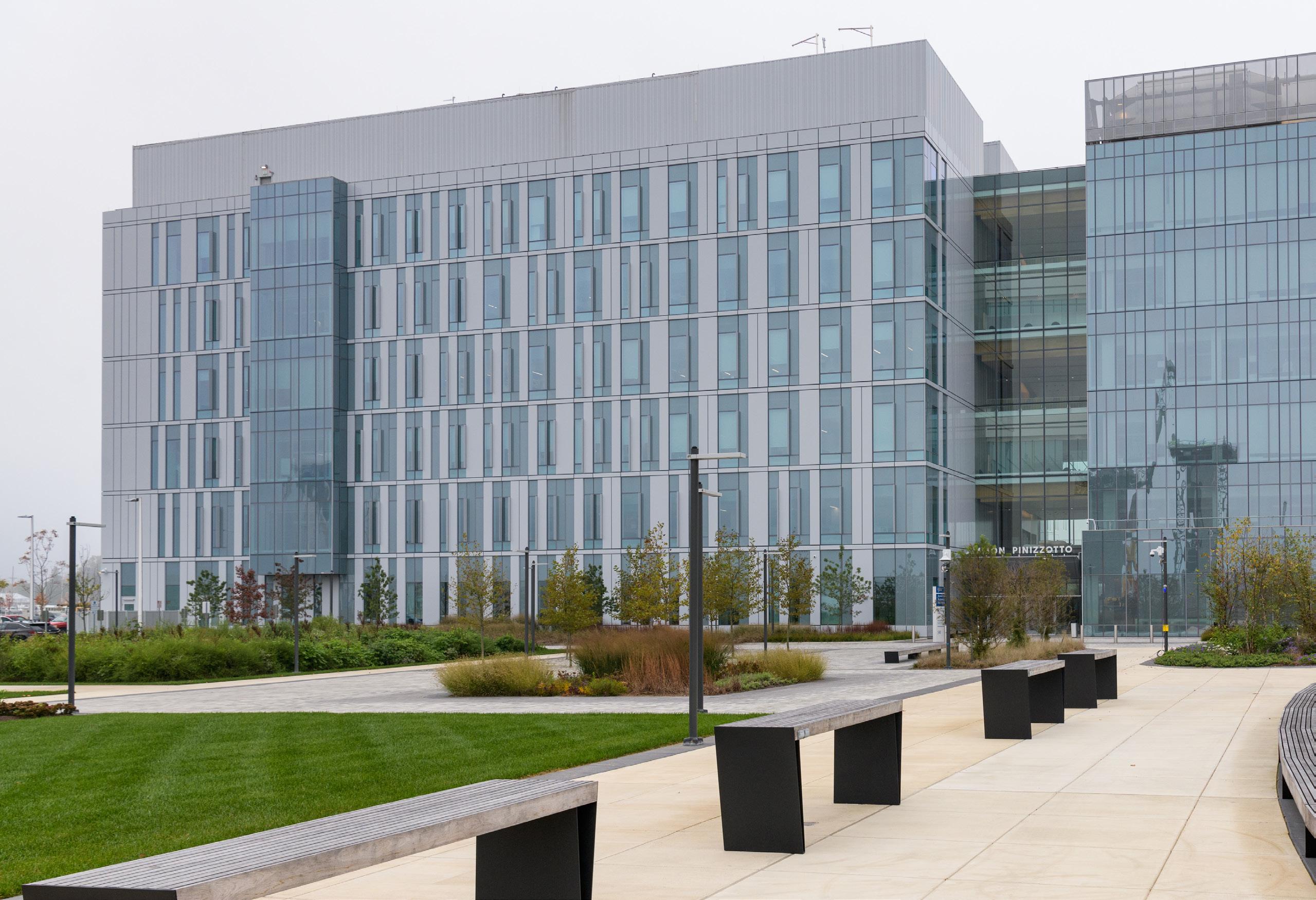
NIIMBL GETS $8.9 MILLION FOR COVID-19 RESPONSE UD-based national institute will address testing, diagnostics, supply chain and vaccine manufacturing
The nation’s battle against the coronavirus (COVID-19) pandemic gained new muscle in May 2020 with an $8.9 million grant from the U.S. Department of Commerce to the National Institute for Innovation in Biopharmaceutical Manufacturing (NIIMBL).
NIIMBL, a public-private partnership headquartered at the University of Delaware and part of the Manufacturing USA network, will use the money to expand testing and diagnostic capability, address problems in the supply chain and help develop approaches to accelerate manufacturing once a vaccine has been developed and approved for use.
“Never in our lifetime have we experienced a global crisis of this magnitude,” said Kelvin Lee, director of NIIMBL and Gore Professor of Chemical and Biomolecular Engineering at UD. “It presents a massive challenge but also an opportunity — one that I deeply believe we are positioned to help meet.” U.S. Sen. Chris Coons of Delaware, who has called for expanding the nation’s vaccine manufacturing capacity, applauded the new grant in a statement released by his office: “The scary truth is that the United States is currently not ready to mass produce a vaccine for COVID-19, even once we’ve developed one — and that’s a problem we need to fix right away,” he said. “I’m thrilled that Delaware scientists and engineers at NIIMBL will be leading that effort.”
The work will draw on NIIMBL’s partnerships with more than 150 members, including those in industry, small business, federal and university-based labs.
“We have the ingenuity, grit and expertise to find new ways to produce what we need to regain America’s health, build the critical manufacturing supply chain and strengthen our ability to respond swiftly and effectively to future challenges,” Lee said.
The National Institute for Innovation in Manufacturing Biopharmaceuticals (NIIMBL) headquarters is in the new Ammon Pinizzotto Biopharmaceutical Innovation Building on the University of Delaware’s Science, Technology and Advanced Research (STAR) Campus.

Specifically, the new grant will support efforts to:
• Provide virus proteins to improve blood testing capabilities
• Assist regional hospital systems with validation of rapid in-house testing
• Identify domestic supply chains to reduce dependence on foreign suppliers of respirators and protective masks
• Validate decontamination approaches for clinical spaces
• Develop automated contact tracing technology within pharmaceutical manufacturing facilities to limit the spread of COVID-19
• Position the nation to scale up medical response to pandemics more quickly by developing flexible manufacturing capabilities for biologic therapies and rapid-release testing
The grant was made by the Department of Commerce’s National Institute of Standards and Technology, part of its first round of funding through the Coronavirus Aid, Relief and Economic Security (CARES) Act.
MAJOR STEP FOR BIOPHARMA RESEARCH
NIIMBL and FDA sign agreement to support innovation in biopharma manufacturing
The University of Delaware entered into a Collaborative Research and Development Agreement with the U.S. Food and Drug Administration on behalf of the National Institute for Innovation in Manufacturing Biopharmaceuticals (NIIMBL) in 2019.
According to the agreement, known as a CRADA, the FDA and NIIMBL have the ability to collaborate in a pre-competitive environment to strengthen research, innovation, training and collaboration in the biopharmaceutical manufacturing industry.
The CRADA will enable the FDA and NIIMBL to support investments in regulatory science research and training needed to foster advanced manufacturing innovations in areas such as continuous manufacturing, on-demand manufacturing and advanced process control technologies, among others. Ultimately, advancements in these areas will help increase NIIMBL’s national impact by enhancing patient access to new and improved medicines.
“Biopharmaceuticals are more challenging to manufacture than traditional pharmaceuticals and NIIMBL seeks to enhance patient access by innovating the biopharmaceutical manufacturing technologies and processes,” said Kelvin Lee, NIIMBL director and Gore Professor of Chemical and Biomolecular Engineering at UD.
“This CRADA establishes a framework for FDA engagement in NIIMBL projects and initiatives that strengthens the existing NIIMBL-FDA relationship and supports the development of advanced biopharmaceutical manufacturing innovations,” Lee said.
LUNG EXPERTS TACKLING COVID CRISIS
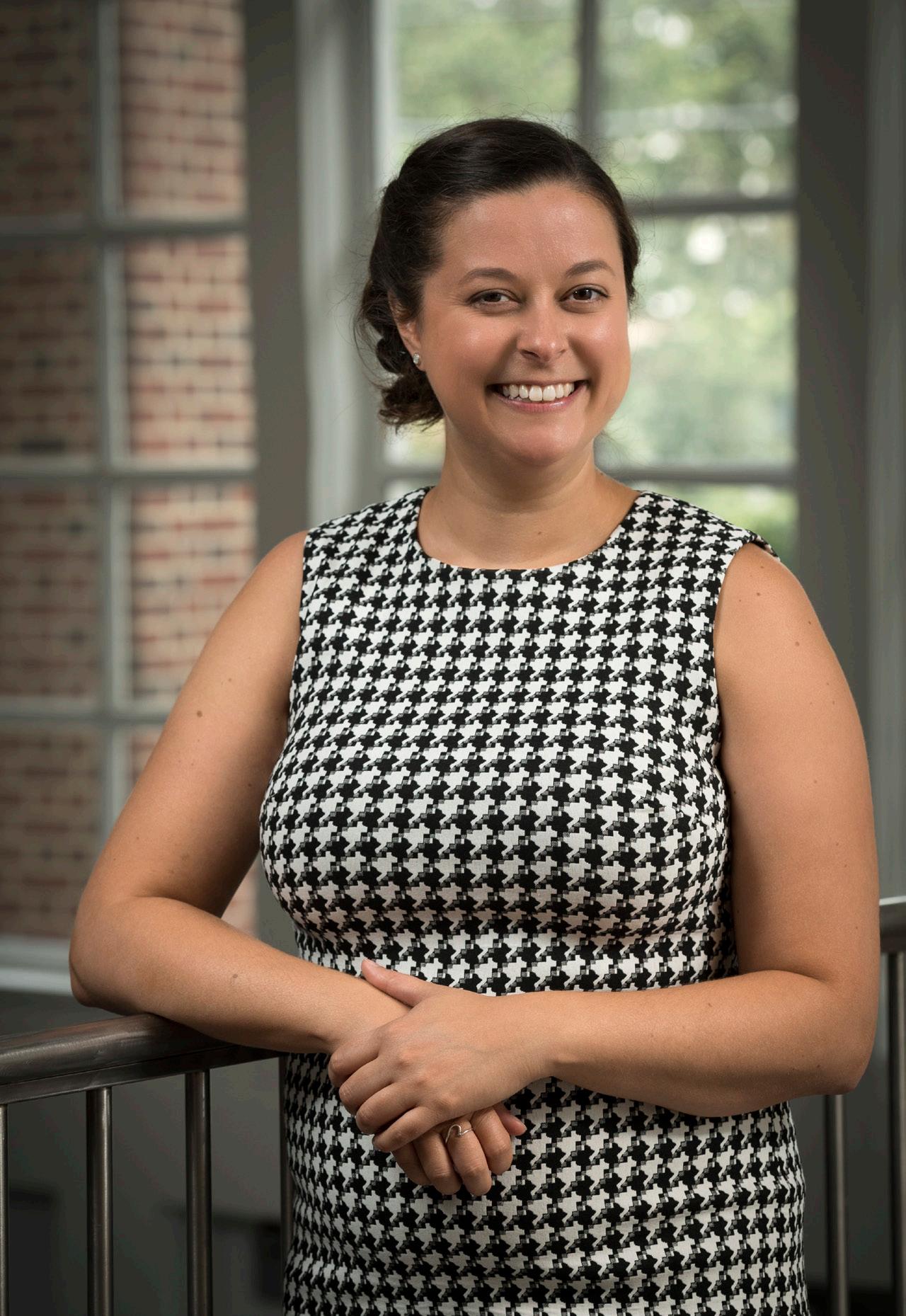
Left to right: Cathy Fromen and Jason Gleghorn Cathy Fromen, an assistant professor of chemical and biomolecular engineering, studies immune response in lungs, and Jason Gleghorn, an associate professor of biomedical engineering, studies how lung tissue develops.
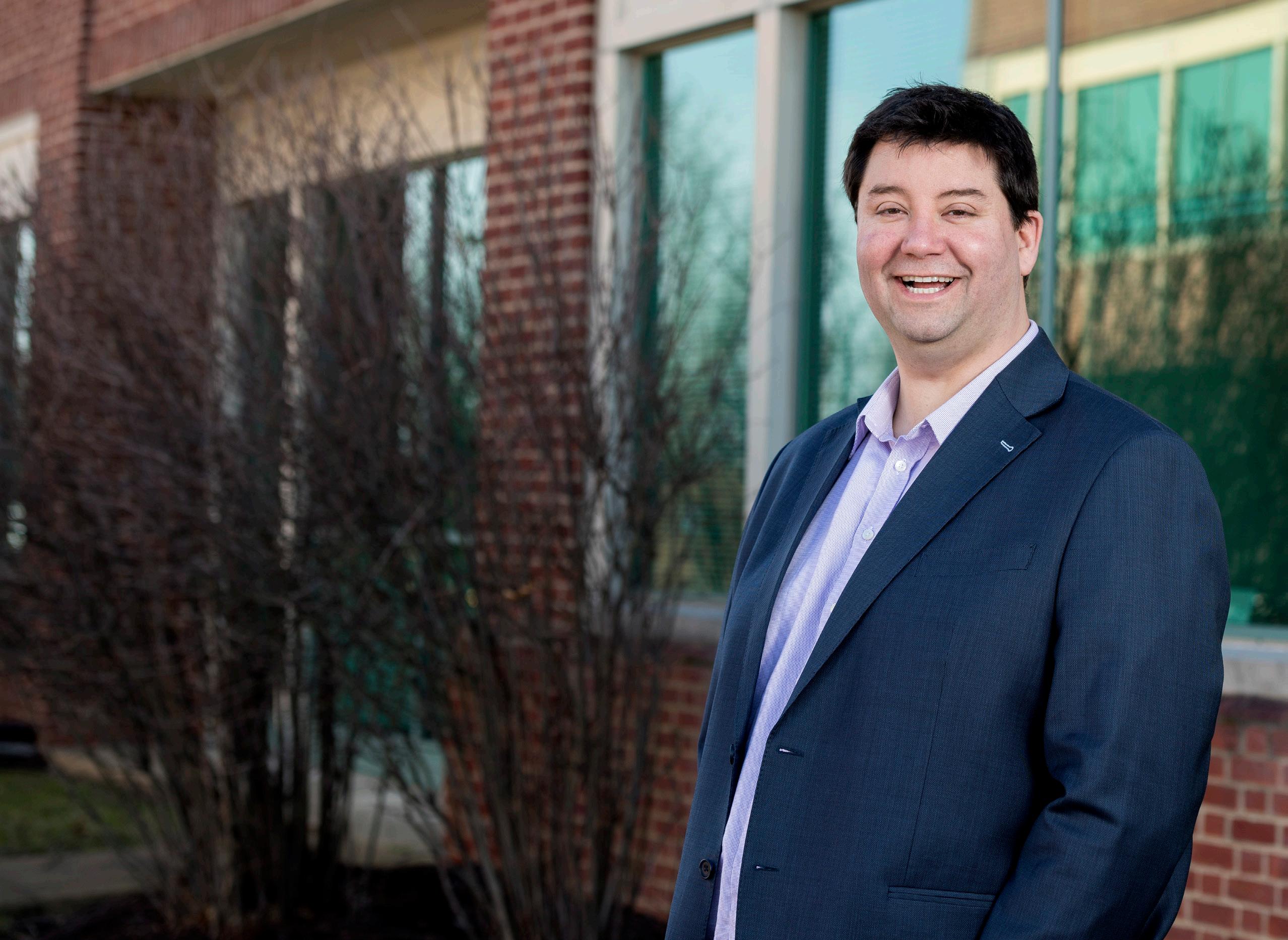
In the age of COVID-19, a disease that ravages lung tissue, their work—and burgeoning collaboration—is more important than ever.
This team received a six-month, $40,000 grant to develop an inhalable microparticle system for the sequestration of SARS-CoV-2 virus within the lung airspaces through the Delaware Clinical and Translational Research Program (DE-CTR) ACCEL’s COVID-19 Rapid Science Grant Program. Fromen, Gleghorn, associate professor of biomedical engineering Ryan Zurakowski, biomedical engineering doctoral students Jasmine Shirazi and Michael Donzanti, and chemical engineering doctoral student Katherine Nelson co-authored a review and perspective paper in the journal Cellular and Molecular Bioengineering that highlighted questions surrounding SARS-CoV-2, the virus responsible for COVID-19, including temporal immune dynamics, infection of non-pulmonary tissue, early life exposure, and the role of circadian rhythms. The team also explored risk factors and discussed how bioengineering approaches can be employed to help understand COVID-19.
A NEW UNDERSTANDING OF PROTEIN MOVEMENT

UD engineers uncover role of surface diffusion in protein transport, which could aid biopharmaceutical processing
A team of engineers has shown that surface diffusion in protein transport into ion-exchange beads depends on adsorption affinity — a measure of attraction between the two materials.
Many of the most promising medicines under development are proteins, often antibodies, to help patients fight disease. These proteins must be purified as part of the manufacturing process — a task that can be tricky and result in costly waste.
Scientists have struggled to directly measure the movement of proteins, known as protein diffusion, in materials that include both solid and liquid components. They have also disagreed on how movement at the surface of the material contributes to protein movement when using ion-exchange chromatography, a laboratory and manufacturing method for separating materials based on their charge. Proteins can creep into the pores of resin beads used to perform ion-exchange chromatography and bind on the walls, based on charge.
Now, a team of engineers from the University of Delaware, with a collaborator from pharmaceutical company Amgen, has shown that surface diffusion in protein transport into ion-exchange beads depends on adsorption affinity — a measure of attraction between the two materials. By exploiting this relationship, the team developed a procedure to purify a monoclonal antibody — a type of molecule that mediates immunity — with productivity 43% higher than usual. The team’s results were published in the Proceedings of the National Academy of Sciences in March. The paper’s authors include Ohnmar Khanal, a doctoral student in chemical engineering; Vijesh Kumar, postdoctoral fellow in chemical engineering; Fabrice Schlegel, a principal engineer at Amgen; and Abraham Lenhoff, Allan P. Colburn Professor of Chemical Engineering.
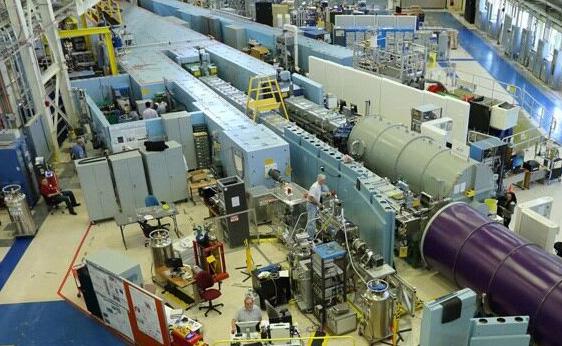
A NEW SCIENTIFIC INSTRUMENT FOR THE NATION
UD tapped to lead development of world-class neutron research instrument
The University of Delaware has been tapped to lead the development of a world-class neutron spin echo spectrometer for the United States. This scientific instrument will advance U.S. research on countless materials important to humanity, from new medicines to more powerful batteries.
Norman Wagner, the Unidel Robert L. Pigford Chair in Chemical and Biomolecular Engineering and director of the Center for Neutron Science, will lead the project, which is funded by an $11.8 million grant from the National Science Foundation.
It was among the first awards in NSF’s Mid-Scale Research Infrastructure program, announced Sept. 17, 2019.
Wagner will work together with colleagues at the National Institute of Standards and Technology (NIST) in Gaithersburg, Maryland, and at the University of Maryland to elevate the nation’s best neutron spin echo spectrometer, housed at NIST, to world-class status, boosting research in engineering, soft matter such as gels and polymers, and the biological sciences.
The upgraded instrument, which will become part of the Center for High Resolution Neutron Scattering, a national research facility at NIST, will allow scientists to see how molecules are moving through things, whether it’s the proteins in a biopharmaceutical drug or the molecules that trap salt rather than let the water flow through a water purification membrane. These motions, viewed over a few hundred nanoseconds, may sound minuscule, but they can affect the properties of a material in critical ways, Wagner said.
Formerly, scientists believed the structure of a material gave it its function — that was more of a three-dimen-
The University of Delaware will lead the development of a world-class neutron spin echo spectrometer, which will be installed at the National Institute of Standards and Technology’s Center for Neutron Research, shown here.

sional way of looking at the world. But 21st-century thinking is in 4D – where time provides the fourth dimension, as structure is dynamic. Wagner’s French colleagues refer to it as “4D structuration,” and Wagner, who collaborates with neutron researchers around the world, is eager to move the concept forward
“During the next five years, UD, NIST and Maryland will be working together to engineer this new tool for scientific discovery,” Wagner said. “And our UD students will be part of it, preparing the scientific community for this awesome new instrument that will be equal to, or better than, the best in the world.”
This image was obtained during a neutron scattering experiment.

CELEBRATING THE PROMISE OF NEUTRONS
October 30, 2019 was Neutron Day at the University of Delaware. Over 100 scientists and students from across UD, the National Institute of Standards and Technology (NIST), and nearby local universities and industries gathered at UD for a symposium that included technical presentations, posters, and networking.
Key themes of the meeting included the use of neutron spin echo scattering instrumentation to solve grand challenge problems in soft matter science and biology, as well as the use of neutron scattering more broadly to aid scientists and engineers in their research that is developing advanced medicines, advanced nanocomposite materials, and sustainable energy production.
Feng Jiao is the Robert Grasselli Development Professor of Chemical and Biomolecular Engineering at the University of Delaware.
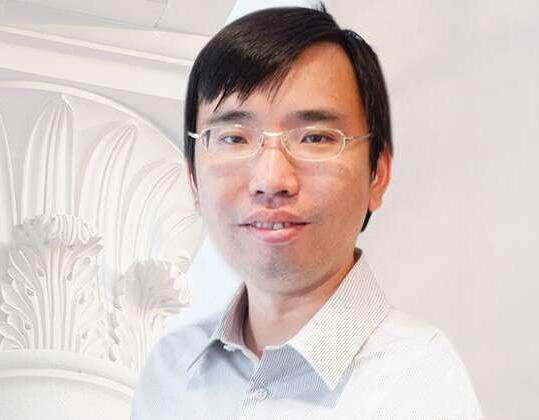
ADVANCES IN CARBON UTILIZATION
In an effort to develop sustainable solutions to humanity’s energy needs, many scientists are studying carbon capture and utilization — the practice of using excess carbon dioxide in the atmosphere or from point sources, instead of fossil fuels, to synthesize chemicals used to make everyday products, from plastics to fuels to pharmaceuticals.
Feng Jiao, Robert Grasselli Development Professor of Chemical & Biomolecular Engineering, is a leader in the field of carbon capture and utilization. Now, he and his colleagues have made a new discovery that could further advance carbon capture and utilization and extend its promise to new industries.
In the journal Nature Chemistry, Jiao and collaborators from the California Institute of Technology, Nanjing University (China), and Soochow University (China) describe how they formed carbon-nitrogen bonds in an electrochemical carbon monoxide reduction reaction, which led to the production of high-value chemicals called amides. These substances are useful in a variety of industries, including pharmaceuticals. The team is the first to do this. “Now, starting with carbon dioxide as a carbon source, we can expand to a variety of products,” said Jiao, who in July 2020 became the director for UD’s Center for Catalytic Science and Technology (CCST).
Also, in a perspective paper published in Nature Catalysis, Jiao and colleagues described the state of carbon monoxide electroreduction technology and described device designs that could push the field forward. The team, which includes Matthew Jouny, a graduate student in chemical engineering, and Gregory S. Hutchings, a Postdoctoral Innovation Fellow at UD’s Horn Entrepreneurship, also performed an original economic and life cycle analysis, which shows how a two-step conversion from captured carbon dioxide to chemicals can be both profitable and sustainable.
“Electrochemical carbon monoxide reduction should be considered as a key technology for carbon utilization because of the technological and economical advantages over direct CO2 electrolysis,” said Jiao.
If brought to full production scale for just two potential end products, ethylene and acetic acid, the complete system, powered by renewable energy, could save up to 200 million metric tons of carbon dioxide per year from ending up in the environment, as well as dramatically reducing dependence on oil and natural gas in the chemical industry.
Jiao and Hutchings founded a startup company, Lectrolyst, that is turning this chemical synthesis platform into commercially-ready devices.
NEW TWIST ON CRISPR TECHNOLOGY
Wilfred Chen, Emily Berckman tweak gene research process
In a two-year collaboration, two UD researchers aimed to improve an assembly-line process that could be helpful in producing such things as pharmaceuticals and biofuels.
Wilfred Chen, the Gore Professor of Chemical Engineering, and Emily Berckman, a doctoral student in the Department of Chemistry and Biochemistry, published their method in Chemical Communications.
The collaboration was expedited by the Chemistry Biology Interface Program, which is sponsored by the National Institutes of Health. Funding also came from the National Science Foundation.
The goal of their work was to engineer a more efficient method of producing certain biochemical reactions in cells — specifically, the way enzymes work together to promote those changes in the cells. Imagine a relay team at a track meet, with one member of the team after another advancing the baton and passing it along to the next as they move toward the finish line. Enzymes do some of their work that way within cells, working as catalysts to speed up reactions and pass that new product along to the next enzyme. In this case, the “batons” are the products of these reactions, changing between each handoff. So enzyme No. 1 modifies the baton and hands it off to enzyme No. 2, which modifies the baton and hands it off to enzyme No. 3 and so on until the desired product is achieved.
“Imagine that you want to pass a product along to the next person,” Chen said. “But you are so far apart that it’s hard to pass it on. If you reduce the distance between the different partners, you get better efficiency and accuracy and you reduce competition.”
In nature, enzymes often gather in groups to do this collaborative work in closer proximity, using protein-based scaffolds as their gathering place and producing a “cascade” of biochemical reactions that way.
Chen and Berckman have found an improved way to control the construction and placement of those scaffolds, as well as the cascade of reactions they produce, using the revolutionary new genetic technology known as CRISPR/Cas9.
CRISPR is an acronym (clustered, regularly interspaced palindromic repeats) that describes DNA sequences used in the immune system of certain bacterial cells.
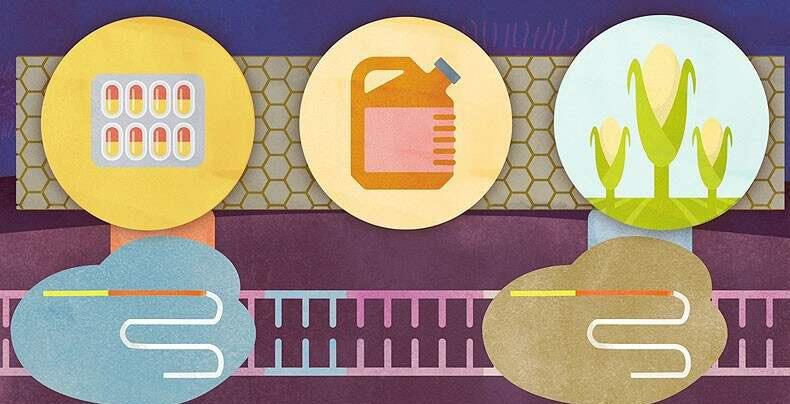
BUILDING A FAT-FREE CELL
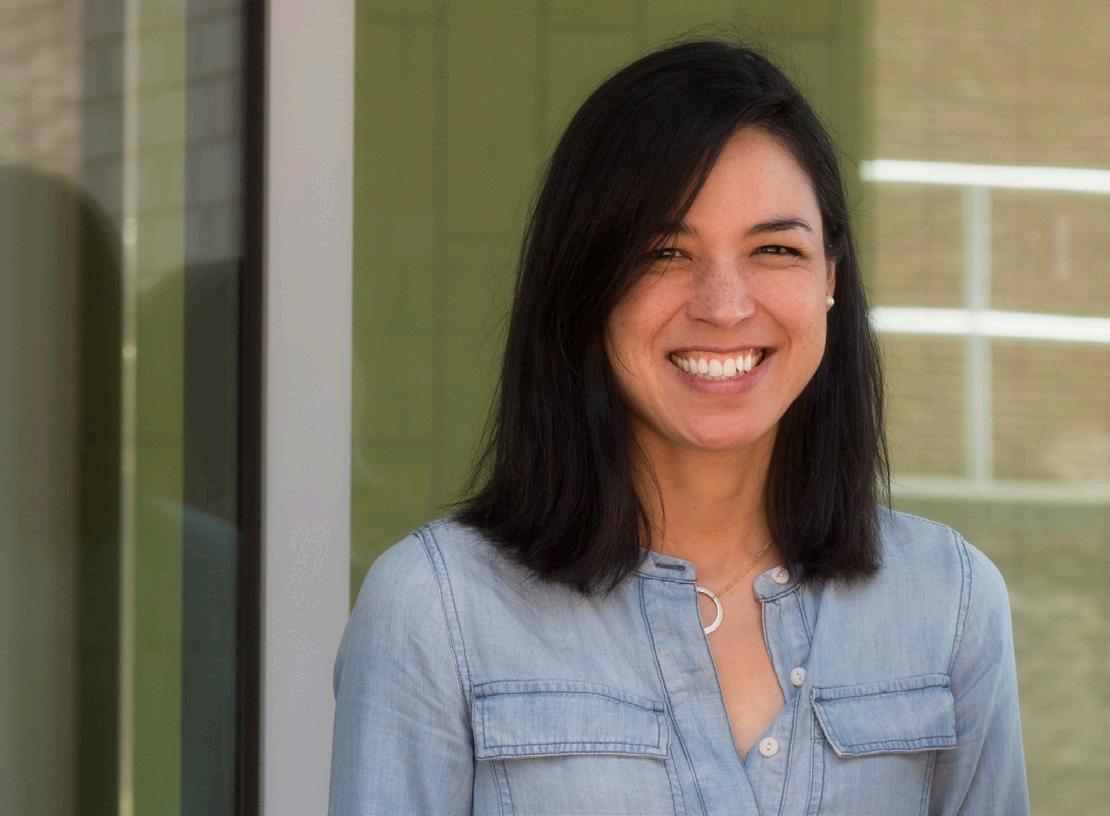
A dream team of scientists from across the country is building and studying synthetic, fat-free cells that could someday be used to advance biotechnology, tissue engineering and—perhaps most importantly—to further our understanding of the rules of life.
Millicent (Millie) Sullivan, a professor of chemical and biomolecular engineering, is part of the transdisciplinary team, which also includes researchers from Arizona State University, Michigan State University, Penn State University, the University of California at Santa Barbara and the University of Minnesota-Twin Cities. Sullivan will contribute her expertise in biomaterials and tissue engineering, especially in peptide design and assembly and subcellular processing mechanisms.
The research team received a $3.9 million grant from NSF in September 2019. Their work will continue through August 2022. The team is building cells without lipids, using polypeptides in their place. Polypeptides can assemble into large proteins, act as enzymes to catalyze chemical reactions and more. The team aims to use polypeptides to assemble and compartmentalize cells and also to replace the lipid bilayer.
These fat-free cells, once realized, could be useful in biotechnology and tissue engineering applications, said Sullivan.
Importantly, this fundamental research will also allow scientists to discover new insights about how cells come together.
“These synthetic cells could eventually allow one to mimic things like bacterial cell communities, enabling us to more systematically test how specific membrane components affect their organization and collective behavior,” said Sullivan.
ADVANCING FUEL CELL RESEARCH
UD startup W7energy awarded $3.4M in Department of Energy funding
W7energy, a startup company with roots at the University of Delaware, was recently awarded $3.4 million in new funding from the U.S. Department of Energy’s Advanced Research Projects Agency-Energy (ARPA-E) to advance and commercialize a new class of polymer membranes that will make fuels cells much more economical.
Coupled with an additional $1 million private investment, W7energy’s research could bring zero-emission fuel cell electric vehicles within reach. Already, the startup’s technology is projected to be one-third less expensive than traditional fuel cell systems.
The polymer membranes are a platform technology that will enable many other technologies, too, for clean hydrogen production, battery storage, removing carbon dioxide from the air and more.
W7energy grew out of UD-developed technology from the lab of Yushan Yan, Henry B. du Pont Chair of Chemical and Biomolecular Engineering.
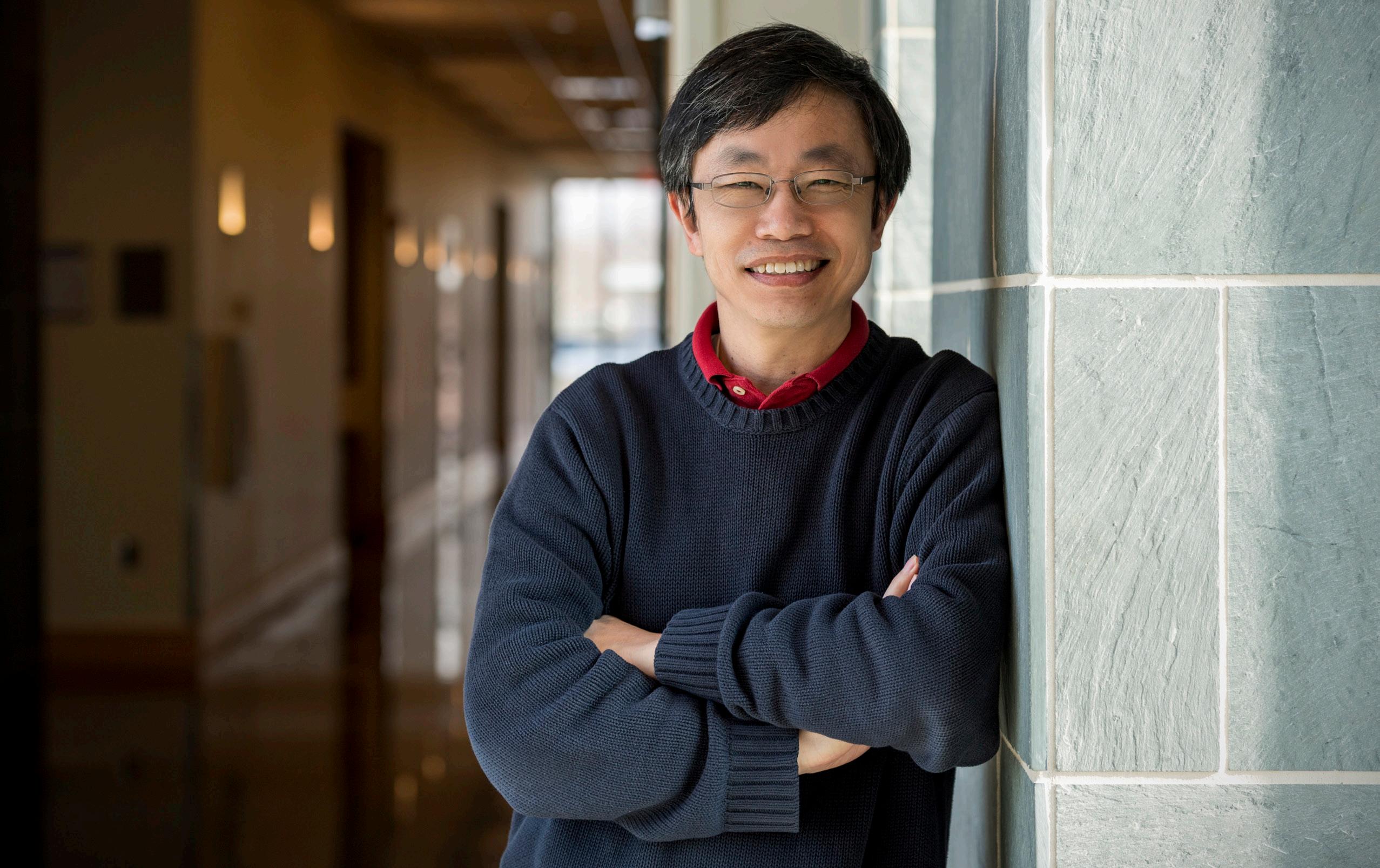
AMMONIA FOR FUEL CELLS
pushing cost-effective fuel cell technology forward
UD researchers are working on technology to make fuel cells cheaper and more powerful so that fuel cell vehicles can be a viable option for all someday. Traditional fuel cell research involves hydrogen fuel cells, but the UD researchers are engineering fuel cells that utilize ammonia instead.
In an analysis published in Joule, the team found that among fuels produced from renewable energy, ammonia has the lowest cost per equivalent gallon of gasoline. “As a nitrogen-based liquid fuel, ammonia is cheaper to store and distribute than hydrogen and avoids the carbon dioxide emissions of other liquid fuels, which are expensive to capture” said Brian Setzler, one of the lead authors and a postdoctoral associate at UD.
The challenges, however, are that ammonia does not work in a proton exchange membrane fuel cell; and that ammonia is more difficult to oxidize than hydrogen, which causes ammonia fuel cells to produce less power than hydrogen fuel cells. The team solved the first problem by using hydroxide exchange membrane fuel cells that have been studied for over a decade in the lab of Yushan Yan, a Distinguished Engineering Professor at UD. Assisted by a $2.5 million grant from the REFUEL program of the Advanced Research Projects Agency-Energy (ARPA-E) in the U.S. Department of Energy, the UD team engineered a fuel cell membrane that can operate at higher temperatures to speed up ammonia oxidation. They also identified catalysts that were not poisoned by ammonia.
“With these improvements, we have demonstrated a new direct ammonia fuel cell prototype with a peak power density of 135 milliwatts per square centimeter, which closes much of the performance gap compared to hydrogen,” said research associate Yun Zhao, the lead author of the paper who has been working on direct ammonia fuel cells since 2016.
The research team, all from UD’s Department of Chemical and Biomolecular Engineering, also includes research associate Junhua Wang, recent doctoral graduate Jared Nash, postdoctoral associate Teng Wang, assistant professor Bingjun Xu, and Distinguished Engineering Professor Yushan Yan.
BUNDLEMERS
New polymer units created by UD, Penn researchers could enable materials breakthroughs
“These are tools for anybody to use, whether you’re a chemist, engineer, or physicist,” said Darrin Pochan (right), chair of the Department of Materials Science and Engineering at UD. “It's hard to think of an equivalent material or experimental tool people use widely. It’s like a toolbox for anybody to design future things.” A team of researchers from the University of Delaware and the University of Pennsylvania, with primary support from the U.S. Department of Energy Biomolecular Materials Program, has created a new fundamental unit of polymers that could usher in a new era of materials discovery.

The researchers designed and created rigid, self-assembling, customizable polymer chains by linking together new building blocks called bundlemers — a term coined at UD. They described their work in the journal Nature.
To create bundlemers, the team assembles four individual peptides, themselves short chains of amino acids, into nanoscopic cylinders. The bundlemer cylinders are then linked together, end-to-end, through a highly efficient and controlled series of chemical reactions known as “click” chemistry. The resulting polymer chains are rigid, rod-like molecules that are based in biology yet do not exist in nature. Bundlemer chains can then be modified with components such as synthetic polymers or inorganic nanoparticles to create new hybrid nanomaterials. “There’s a basic premise in materials that if you can control function and structure, then you can essentially build anything,” said Chris Kloxin, study author and assistant professor of materials science and engineering and chemical and biomolecular engineering at UD. “We have a very well-defined structural unit, this bundlemer, upon which we have the ability to add chemical functionality at any location.”
Because of their rigidity and customizability, bundlemers could be used to design new materials with a wide range of applications, from high-performance fibers to single-use plastics to biologics, medicines that employ biological components instead of traditional chemistries. The rigidity of bundlemers could also make these materials useful as substitutes for famously strong materials such as the steel in bridges, the silk in parachutes or the Kevlar in bulletproof vests.
University of Delaware chemical and biomolecular engineering professor and chair Eric Furst and a team of researchers from the Ecole des Ponts and University ParisEst in France have discovered a process called contactcontrolled aging that explains some age-related changes in paste materials.

WHY TOOTHPASTE AND CEMENT HARDEN OVER TIME
UD engineer part of international collaboration that explains aging in paste materials
Many paste materials, also known as dense colloidal suspensions, stiffen as they age. Structural dynamics, or changes in the loads the materials undergo over time, are partly responsible for this change, but for decades, experts have suspected that there’s more going on inside these materials.
Now, chemical and biomolecular engineering professor and chair Eric Furst and a team of researchers from the Ecole des Ponts and University Paris-Est in France have discovered a process called contact-controlled aging that explains some age-related changes in paste materials.
They found that contacts form between particles, stabilizing the microstructure of these materials. Then, those contacts stiffen, increasing the stiffness of the materials. The team described their findings in a paper published in the journal Nature Materials.
“When people think about aging in materials and the mechanical properties of materials as they age, especially in rheology or the study of how things flow, this mechanism has been overshadowed by changes in the organization, or microstructure, of the material,” said Furst.
Not only are the findings novel, they are likely to prove useful. By understanding how materials age, the people who use them can design better ways to predict and mitigate unwanted changes in materials performance. The experiments closely tie the chemistry of the particle surfaces, which can be tailored by chemical reactions or with additives like surfactants and polymers, to the bulk material properties.






